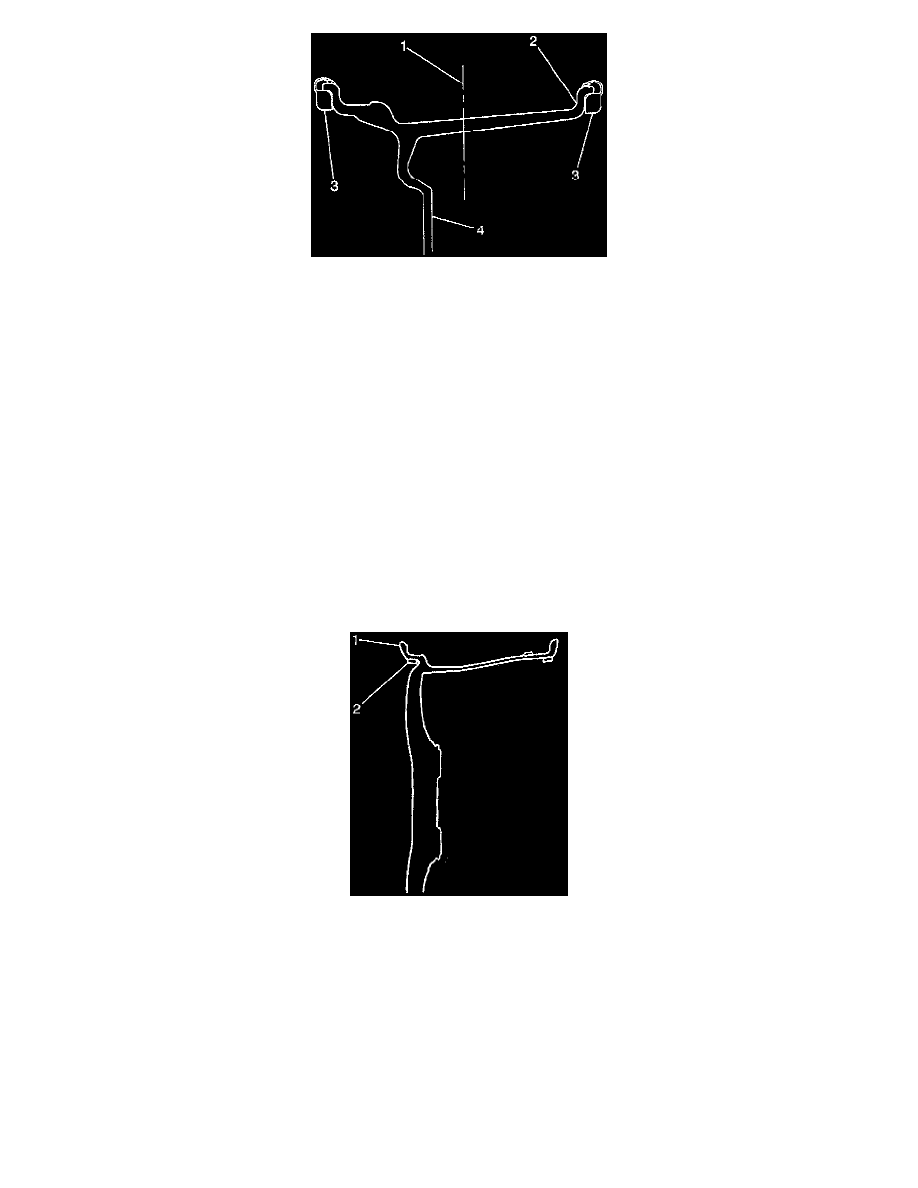Corvette V8-5.7L VIN G (1997)

GENERAL BALANCE PRECAUTIONS
1. Clean deposits of foreign material from the inside of the wheel.
2. Remove stones from the tread to avoid operator injury during spin balancing.
3. Remove stones from the tread to obtain a good balance.
4. Inspect the tire for damage.
5. Balance the tire according to the equipment manufacturer's recommendations.
Off-Vehicle Balancing
Use a balancer which pilots the wheel by the center hole (not the wheel stud holes). Follow the equipment manufacturer's instructions.
Some electronic off-vehicle balancers are more accurate than the on-vehicle spin balancers. Do not correct for rotor unbalance. If the vibration is not
corrected by the off-vehicle balance, perform a on-vehicle balance.
On-Vehicle Balance
1. Do not remove the wheel weights added from the electronic off-vehicle balance.
2. Split the new on-vehicle weights equally between the inner and outer rim flanges of the wheel to avoid disturbing the dynamic balance from the
electronic off-vehicle balancer.
3. Follow the equipment manufacturer's instructions.
Wheel Balance Weights
Important: Install the coated weights with care to prevent the polyester coating from cracking. Use a nylon or plastic tipped hammer during installation
of the coated weights.
Use special polyester coated clip-on wheel balance weights to balance aluminum wheels. The weights are designed to fit over the thicker inboard and
outboard rim flanges of the aluminum wheel. The following advantages are provided with the use of the special polyester coated clip-on wheel balance
weights:
-
The weights provide a better appearance.
-
The weights will not discolor.
-
The weights will not corrode.
-
The weights will not damage the wheel.
Magnesium Wheel (Export Only)
